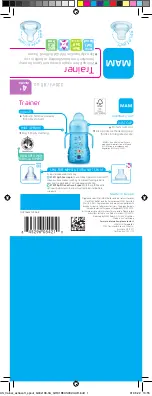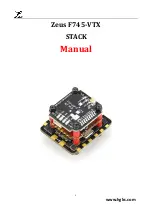
www.balluff.com
29
english
8
Error and warning sequences
LED error and LED warning sequences are output for each
of the interfaces. Error and warning bits however can only
be read by the controller for the BiSS interface.
Up to eight different errors and warnings are displayed. A
warning is only output when at least one warning and no
error is present. If an error is present, only the error is
displayed.
With an error, the light flashes red and with a warning, it
flashes orange.
The eight errors/warnings are divided into two groups that
are introduced by a fast red or orange flickering
respectively.
In each area, a maximum of four messages are output.
Each message is output via slow flashing with a duty cycle
of 1:1. The message can be identified by counting the
flashing impulses. There is a long, dark pause between
two messages.
The error bit is deleted after the data set has been read. If
the EW event is still present, it is reset. The flashing
sequence is repeated until at least one sensor head data
set is read in which the corresponding bit was set, and as
long as the EW event is still present.
Possible warnings
Fig. 8-1:
Flickering
Flickering
Red range
Flashing
Flashing
Orange range
Optical signaling of multiple warnings
In the example shown by Fig. 8-1 Warning 1 and
Warning 2 is in the red area. Warning 3 is in the orange
area.
In the BiSS register address space, the warning byte is
located at the address 0x49. The different meanings of the
bits are listed below. The bits are also the basis for the
orange LED flashing sequence. This is why the list
describes the warning numbers (that can be counted on
the LED) and the bit in the warning byte.
The orange flashing sequences represent warnings and
have the following meanings:
– Red range in Fig. 8-1
Warning 1 (bit 0):
Unused
Warning 2 (bit 1):
Unused
Warning 3 (bit 2):
Unused
Warning 4 (bit 3):
Unused
Warning 1 (bit 4):
Unused
Warning 2 (bit 5):
Unused
Warning 3 (bit 6):
Unused
Warning 4 (bit 7):
Unused
Possible errors
Fig. 8-2:
Flashing
Flashing
Flickering
Flickering
Orange range
Red range
Optical signaling of multiple errors
In the example shown by Fig. 8-2 Warning 1 and
Warning 4 is in the red range. Warning 4 is in the orange
range.
In the BiSS register address space, the error byte is
located at the address 0x48. The different meanings of the
bits are listed below. The bits are also the basis for the red
LED flashing sequence. This is why the list describes the
error numbers (that can be counted on the LED) and the
bit in the error byte.
The red flashing sequences represent errors and have the
following meanings:
– Red range in Fig. 8-2
Error 1 (bit 0):
Sensor head is not yet ready
(switch-on sequence), internal
defect
Error 2 (bit 1):
Unused
Error 3 (bit 2):
SSI clock frequency too high
1)
Error 4 (bit 3):
Internal undervoltage
Error 1 (bit 4):
Sensor head is not yet
completely above the magnetic
tape
Error 2 (bit 5):
Sensor signals too low, gap too
high, no magnetic tape
Error 3 (bit 6):
Inconsistency error, magnetic
tape damaged
Error 4 (bit 7):
Error generating 1 Vpp signal
1)
If the sensor head is not located above the magnetic tape, this error is not
transmitted.
BML-S1G0-_7_ _-M5E_-_0-_ _
Absolute magnetic encoder system
Содержание BML-S1G0 7 M5E 0 Series
Страница 2: ...www balluff com...
Страница 3: ...deutsch BML S1G0 _7_ _ M5E_ _0 _ _ Betriebsanleitung...
Страница 4: ...Original Betriebsanleitung www balluff com...
Страница 41: ...english BML S1G0 _7_ _ M5E_ _0 _ _ User s Guide...
Страница 42: ...Original User s Guide www balluff com...
Страница 79: ...fran ais BML S1G0 _7_ _ M5E_ _0 _ _ Notice d utilisation...
Страница 80: ...Notice d utilisation d origine www balluff com...
Страница 117: ...italiano BML S1G0 _7_ _ M5E_ _0 _ _ Manuale d uso...
Страница 118: ...Manuale d uso originale www balluff com...
Страница 155: ...espa ol BML S1G0 _7_ _ M5E_ _0 _ _ Manual de instrucciones...
Страница 156: ...Manual de instrucciones original www balluff com...
Страница 193: ......
















































